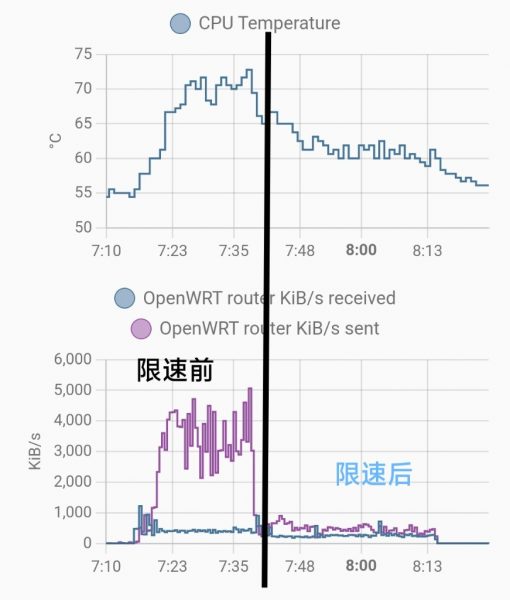路由虚拟化,意义何在?
见此题目,心急的路由玩家,可能等不及要说,我要all in one啊。
“主路由还要承担NAS、HA、运行docker,甚至一些通用win/linux虚拟机的脚本工作,我已经按大佬教程在ikuai/openwrt上搞了kvm,挺香,你不搞么?”
非也,我是反向操作,先虚拟化,再跑路由,理由也很简单 –
“首先,专业方案解决专业问题,所以尽管底层都是kvm,我不喜欢用一个路由系统做virtualization host,NAS系统也同理。其次,我要极致灵活性和对特殊需求的支持能力。”
对第二点,我举个简单的例子,我希望ikuai实现以下需求 –
- 对硬件#1物理口做成单臂路由,vlan id 3为WAN去拨号,vlan id 12为LAN,且开DHCP。
- 然后把#2物理口加入ikuai WAN2(第二条宽带,或者4G wwan转成有线接入做冗余连接备用)。
- 再把#3物理口加入LAN,而#3物理口vlan id 22放给二级路由的LLAN。
- 二级路由的WAN不走物理口,直接走host内部虚拟交换机接在ikuai LAN的下边。
如果路由裸装ikuai系统,我不知道是否方便实现,花点心思或许可以吧。但如果物理机是Proxmox VE,我实际遇到的使用场景应该比如上说的还复杂些,完全不是问题,ikuai完全不需要设置任何vlan,如上需求可以都在pve host的linux vlan和bridge的层面做好,进路由看到的完全是多块virtio独立网卡。
“那么今天你要讲,怎么在pve+ikuai上实现这个需求?这种需求一般人用不上,我为何要了解?”
非也,今天想讲下我在家中遇到一个更有意义的需求,给智能电视(尤其某些第三方APP)限速,且主要针对上传速度。
首先,为何要限速?观察下图,黑线两侧,是限速前后状态对比。
我们可以很明确的发现,限速前上传速度是4MBytes/s左右,可以说基本把家宽的上行带宽吃完了,此外我们的RK3399被迅速推高了15℃,温度达到70℃左右,别忘记现在还只是春末夏初。
完整阅读本篇»










 京公网安备 11011502004657号
京公网安备 11011502004657号